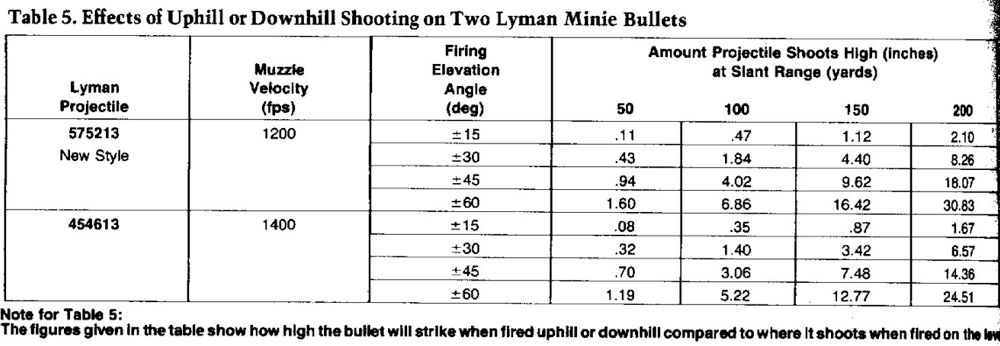In another thread Artificer said, “Oh, don’t forget that when aiming EITHER uphill or downhill, one has to aim BELOW the normal target area or you will shoot too high. Best to get some practice in on this as well to see how much you have hold below when doing such shooting. One hunter in our club was up in a Tree Stand and did not realize this. The Buck he shot at was only 30 yards from his tree, but he missed with three shots.” Don’t want to hijack shootgunner87's thread, so thought I’d start a new one.
What Artificer said about always hitting high when shooting up or down at a steep angle is perfectly true, for all projectiles from arrows to smokeless sniper rifles. it is important, though, for us to understand the degree to which that causes us problems. The effect is worse when the angle is steep, the bullet is slow or the distance is long. It’s not very great at our normal hunting distances. Consider the hunter above, shooting at 30 yards. How high was he in the tree? I’d guess between 12 and 20 feet. Assuming a high stand, lets call it 21 feet, 7 yards. If we plot out the angle by making a drawing to scale and measuring the angle, it comes out very close to 15 degrees. The first Lyman handbook has an excellent discussion about this problem, and gives us some useful data. That shows that at an incline angle of ± 15°, shooting a conical at 1400 fps at 50 yards, the error is only .08”. Even at an incline angle of ± 60° the error is only 1.19”.
So, that shooter didn’t miss his deer 3 times because of the incline problem. It takes special circumstances to make the incline angle error a significant factor in our hunting, and most of us will never experience that situation.
Spence
What Artificer said about always hitting high when shooting up or down at a steep angle is perfectly true, for all projectiles from arrows to smokeless sniper rifles. it is important, though, for us to understand the degree to which that causes us problems. The effect is worse when the angle is steep, the bullet is slow or the distance is long. It’s not very great at our normal hunting distances. Consider the hunter above, shooting at 30 yards. How high was he in the tree? I’d guess between 12 and 20 feet. Assuming a high stand, lets call it 21 feet, 7 yards. If we plot out the angle by making a drawing to scale and measuring the angle, it comes out very close to 15 degrees. The first Lyman handbook has an excellent discussion about this problem, and gives us some useful data. That shows that at an incline angle of ± 15°, shooting a conical at 1400 fps at 50 yards, the error is only .08”. Even at an incline angle of ± 60° the error is only 1.19”.
So, that shooter didn’t miss his deer 3 times because of the incline problem. It takes special circumstances to make the incline angle error a significant factor in our hunting, and most of us will never experience that situation.
Spence





